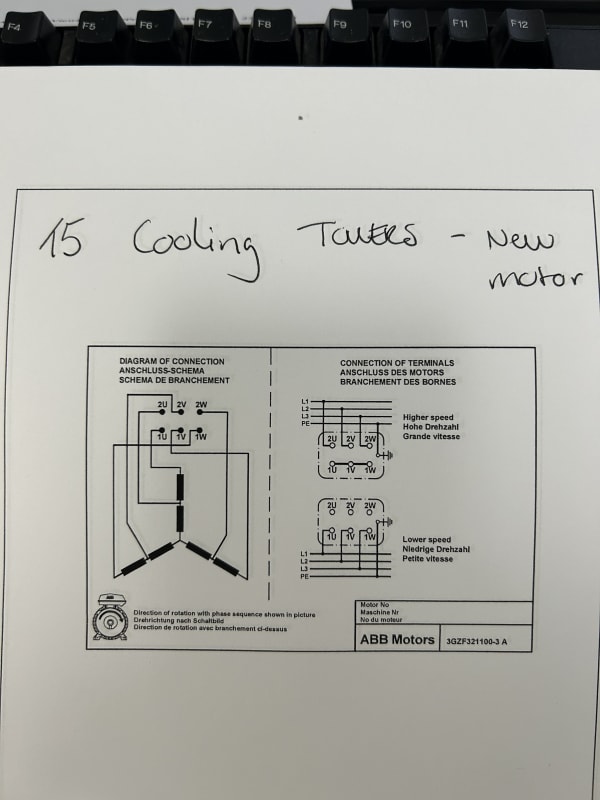Wba1
Electrical
- May 23, 2023
- 4
Hi All - we have two cooling tower motors that have both burnt out in the last 12 months- we send them usually to be rewound and come back connect back up with no problems- the contract changed and the motors were replaced by two speed abb motors and old motors not rewound - we only use two Contactors for high and low speed - the motors were connected and both burnt out -
It’s a 6 point connection remotely to a control panel with two contactors - wondering if the motors are correct to use ?
1 - high speed

High speed is star on 1u 1v 1w with connection to winding 2u 2v 2w
2- low speed is connection to 1u 1v 1w - is the other windings not connected as drawing does not state it’s star ? - or is it star - we only have two contactors and when I search two speed motors there are 3 any ideas please
It’s a 6 point connection remotely to a control panel with two contactors - wondering if the motors are correct to use ?
1 - high speed

High speed is star on 1u 1v 1w with connection to winding 2u 2v 2w
2- low speed is connection to 1u 1v 1w - is the other windings not connected as drawing does not state it’s star ? - or is it star - we only have two contactors and when I search two speed motors there are 3 any ideas please
